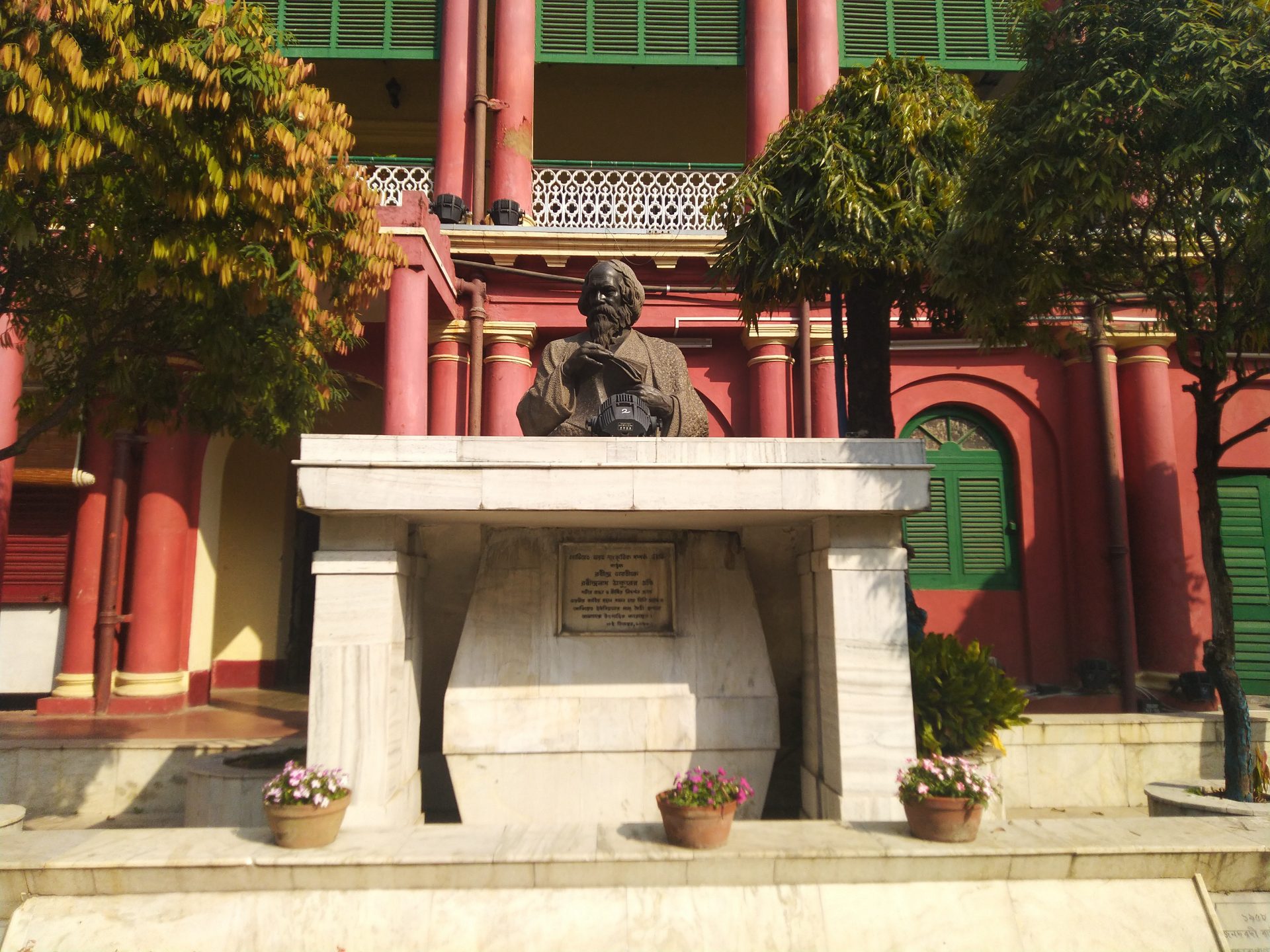Basanta Utsab was started in Santiniketan. It is a three-day cultural extravaganza that West Bengal’s Santiniketan celebrates as the Basanta Utsav. Basanta Utsav literally means the celebration of spring. This vibrant festival marks the arrival of spring in India, particularly in West Bengal. It is characterized by cultural performances, including music and dance, often associated with the works of Rabindranath Tagore.
Festival Highlights
Cultural Significance
Basanta Utsav is a unique celebration initiated by Nobel laureate Rabindranath Tagore at Visva-Bharati University, transforming the traditional Holi festival into an elegant cultural event. The festival celebrates the arrival of spring with:
– Students dressed in yellow (basanti) colors
– Musical and dance performances
– Applying colored powders (abeer)
– Cultural programs showcasing Bengali traditions
History of Basanta Utsav: Origin and Cultural Significance
Basanta Utsav, also known as Holi, traces its roots back to ancient Hindu mythology. One of the legends associated with this festival is the story of Prahlad and Holika. Prahlad, a devotee of Lord Vishnu, faced opposition from his father, Hiranyakashipu, who attempted to kill him multiple times. In a plot orchestrated by Hiranyakashipu’s sister, Holika, Prahlad was made to sit on a pyre. However, to everyone’s surprise, it was Prahlad who emerged unscathed while Holika perished. This event symbolizes the victory of good over evil and is celebrated with great joy in Santiniketan.
Another popular legend connected to Holi is the playful activities of Lord Krishna with colors during Basant Utsav in Vrindavan. Krishna and his beloved Radha and the gopis (cowherd girls) would joyously smear each other with vibrant colors, dancing together in celebration. These stories have added to the cultural significance of Basanta Utsav, making it a cherished festival in Santiniketan.
Cultural Significance of Basanta Utsav
Basanta Utsav, also known as Holi, holds immense cultural significance in Santiniketan. It is a time when people come together, irrespective of caste, religion, or gender, to celebrate the arrival of spring. This festival is a symbol of unity and happiness, bringing individuals from all walks of life under one colorful umbrella of joy. The vibrant cultural heritage of the region is showcased through the exchange of colors made from flowers and natural ingredients such as turmeric powder and sandalwood paste.
During Basanta Utsav, the air is filled with the sounds of music and dance. Traditional folk dances like Bauls, along with feasting on delicious regional cuisine, add to the celebratory atmosphere. The colors used during this festival represent happiness and positivity, washing away all negativity from the past. Basanta Utsav is a time for forgiveness, spreading love and harmony, and embracing the beauty of nature.
Basanta Utsav Around the World
While Basanta Utsav has its roots in India, its vibrance and significance have spread beyond its borders. In Nepal, the festival is known as Fagu Purnima or Holi and is celebrated with great enthusiasm. In Pakistan, it is called Phagwah or Holi and is celebrated by the Hindu community. The celebration has also gained popularity in western countries like the USA, UK, and Canada, where tourists and people of Indian origin celebrate it with fervor. Shantiniketan, with its rich cultural heritage, remains a focal point for the festival, attracting visitors from around the world to witness its festivities and indulge in its diverse culinary offerings.
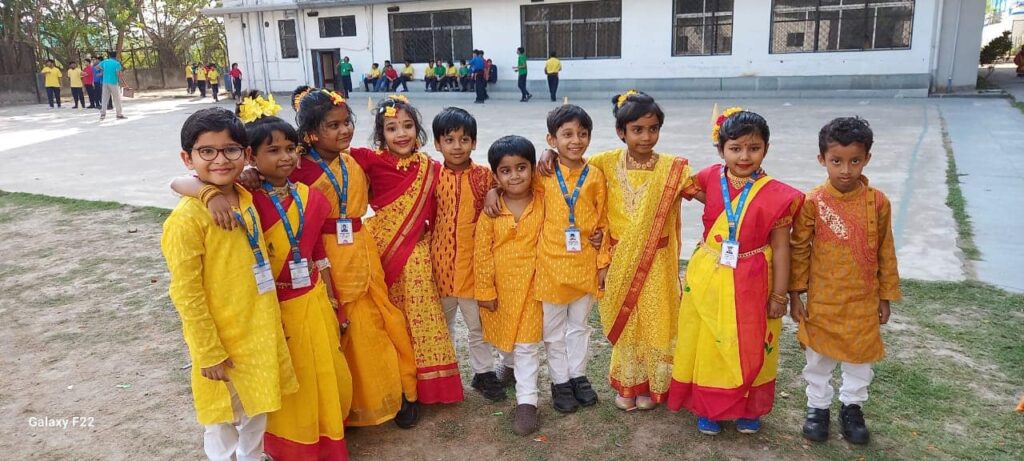
Significance of Basanta Utsav in Indian Culture
Basanta Utsav, also known as Holi, is a festival that holds great significance in Indian culture. It is a time when people bid farewell to the winter season and welcome the arrival of spring with open arms. Basanta Utsav is celebrated with joy, fervor, and a deep sense of cultural heritage.
The festival is a celebration of nature’s renewal and the triumph of good over evil. It is a reminder that no matter the adversities, goodness will always prevail. The stories associated with Basanta Utsav, such as the love of Radha and Krishna and the victory of Prahlad, resonate with people, inspiring them to embrace the positive aspects of life.
During Basanta Utsav, people come together to play with colors, symbolizing unity and the breaking down of barriers. It is a time when social divisions are forgotten, and people from all backgrounds join in the celebration. Traditional sweets and delicacies are prepared and shared, signifying the sweetness of relationships and the spirit of togetherness.
What is Basanta Utsav?
Basanta Utsav, also known as Holi, is a Hindu celebration that marks the arrival of spring. This festival lasts for two days and is typically celebrated in March. It is a time for people to come together, rejoice in the beauty of nature, and indulge in the joyous festivities. Shantiniketan, with its unique way of celebrating Basanta Utsav, has become a renowned destination for experiencing the vibrant colors, music, dance, and culinary delights associated with this festival.
Why is Basanta Utsav Celebrated?
Basanta Utsav is celebrated to welcome the season of spring and bid farewell to winter. It is a time when nature comes alive with blooming flowers and lush greenery, filling the air with a sense of renewal and rejuvenation. The festival holds deep cultural and religious importance, symbolizing the victory of good over evil and the triumph of love and harmony.
The festival is also an occasion for people to let go of past grievances, forgive and forget, and start afresh. It promotes a spirit of unity, bringing people together to celebrate their shared heritage and embrace the joy that comes with the arrival of spring.
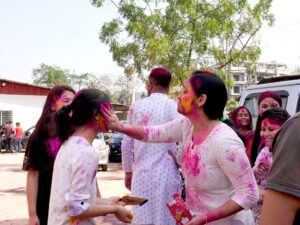
How is Basanta Utsav Celebrated?
Basanta Utsav celebrations vary across different parts of India, but the underlying theme remains the same – the celebration of spring and the joy it brings. In Shantiniketan, the festivities are characterized by the playful application of vibrant colors and the exchange of sweets and traditional dishes.
The celebrations commence with Holika Dahan, where people gather around bonfires to offer prayers and seek blessings for a prosperous year ahead. On the day of Holi, people play with colored powders and water guns filled with colored water called “pichkaris.” The air is filled with laughter, music, and dance as people smear each other’s faces with the colors of joy. Traditional sweets like gujiya, mathri, and dahi bhalla are prepared and shared among friends and family, adding to the festive spirit.
When to Celebrate Basanta Utsav in West Bengal?
Basanta Utsav is celebrated in West Bengal during the month of March. The exact date varies each year according to the Hindu calendar, aligning with the full moon day of Phalgun month, known as Phalgun Purnima.
Basanta Utsav Celebrations in Other Parts of India
Basanta Utsav, known as Holi, is celebrated in various parts of India with different names and unique traditions. In Bihar, it is known as Phaguwa or Phagwah and is celebrated for five days, starting on the full moon day of Phalgun. In Uttar Pradesh, it is called Lathmar Holi, where women playfully beat men with sticks, and men protect themselves with shields.
While the customs and traditions may differ, the spirit of Basanta Utsav remains the same – a celebration of the arrival of spring, the victory of good over evil, and the unifying power of love and harmony.

Exploring the Cultural and Traditional Aspects of Basanta Utsav
Basanta Utsav is not just a festival; it is an opportunity to delve into the rich cultural tapestry of India. Santiniketan, with its deep connection to Rabindranath Tagore, offers a unique platform to experience the cultural and traditional aspects of Basanta Utsav.
The Significance of Basanta Utsav in West Bengal’s Local Culture
In West Bengal, Basanta Utsav holds a special place in the local culture. The town of Shantiniketan, founded by Rabindranath Tagore, has become synonymous with the vibrant celebrations of Basanta Utsav. The festival serves as a platform to showcase the cultural heritage of the region, bringing together people from all walks of life.
During Basanta Utsav, the streets of Shantiniketan come alive with music, dance, and the playful application of colors. It is a time when locals and visitors alike immerse themselves in the cultural traditions that have been passed down through generations.
Homestays: A Great Way to Immerse Yourself in Local Culture
To truly understand the significance of Basanta Utsav, consider opting for a homestay experience in Shantiniketan. Staying with a local family provides a unique opportunity to witness their preparations for the festival and gain insights into their customs and traditions.
As a guest in a Shantiniketan homestay, you can participate in making rangolis (decorative designs made using colored powder), cooking traditional dishes like gujiya or malpua, or even dressing up in colorful attire for the celebrations. It allows you to connect with the local community and experience the festival from an insider’s perspective.
Exploring Nature’s Beauty During Basanta Utsav
Basanta Utsav is not just about colors and festivities; it is also a time to appreciate the beauty of nature. West Bengal boasts picturesque landscapes that come alive during the spring season. Take a leisurely stroll through the gardens of Shantiniketan, where Tagore himself initiated the celebration of Basanta Utsav. Witness the blooming flowers and the vibrant hues that paint the surroundings, filling the air with a sense of awe and wonder.
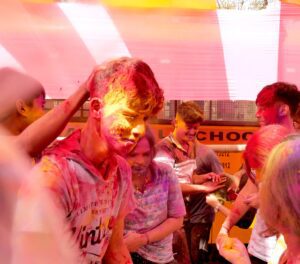
Venture beyond Shantiniketan and explore the nearby villages, where you can witness traditional dances like Jhumur or Santhal, performed to welcome the spring season. Participate in kite flying competitions, a popular activity during Basanta Utsav, and experience the thrill of watching colorful kites soar in the sky.
Museums: Learning About the History and Significance of Basanta Utsav
Museums provide a glimpse into the history and cultural significance of Basanta Utsav. Visit the Uttarayan Complex in Shantiniketan, where you’ll find a museum dedicated to Rabindranath Tagore’s life and works. The museum houses artifacts such as paintings, manuscripts, and personal belongings of Tagore. It also sheds light on various aspects of Basanta Utsav, showcasing its connection to nature, music, and dance.
While in Shantiniketan, take advantage of the workshops conducted by local artisans who specialize in traditional crafts like pottery-making or weaving. These workshops provide a hands-on experience and allow you to appreciate the skills that have been passed down through generations.
Community Service and Social Initiatives
Basanta Utsav is not just about celebration; it also serves as a platform for social initiatives and community service. Many organizations and individuals use this occasion to spread awareness about social issues and promote harmony among different communities.
Consider participating in community service activities such as tree planting drives, cleanliness campaigns, or visiting local schools and orphanages to engage with the children and bring a smile to their faces. These initiatives not only contribute to the greater good but also add a deeper sense of purpose to your Basanta Utsav experience.
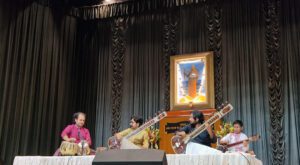
Conclusion
Basanta Utsav in Santiniketan is a celebration of nature, culture, and the joyous arrival of spring. It is a time when people come together to immerse themselves in the vibrant colors, music, and dance that fill the air. By participating in the festivities, exploring the local culture, and engaging in community service, you can create lasting memories and truly appreciate the beauty of Basanta Utsav. So, join us in Santiniketan on March 7th as we celebrate this extraordinary festival and create an unforgettable experience together.

